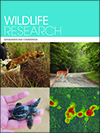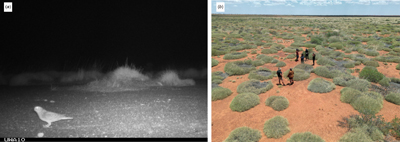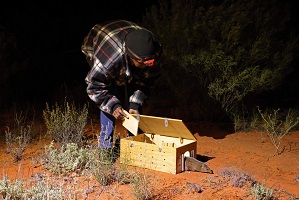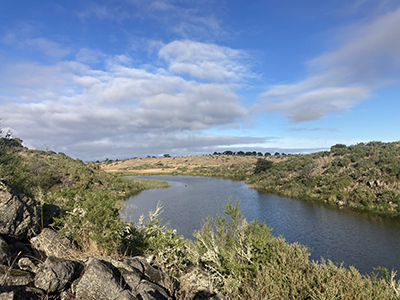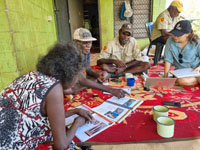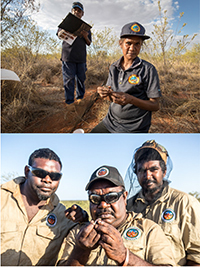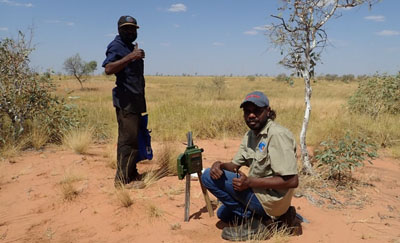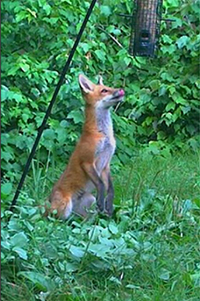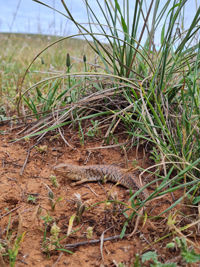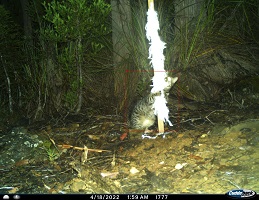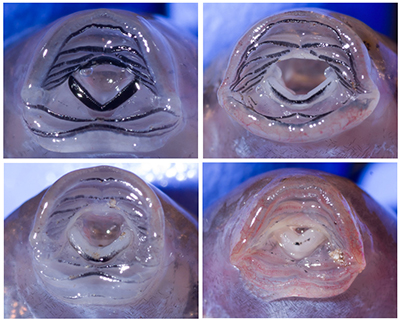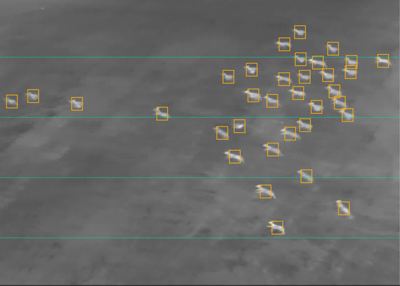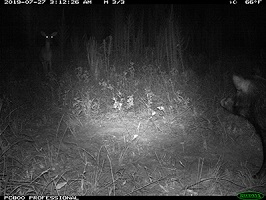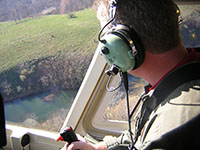This paper provides an introduction to night parrots in the Great Sandy Desert of Western Australia from the dual perspectives of Indigenous rangers and scientists working together to understand their ecology on the Ngururrpa Indigenous Protected Area. We describe night parrot roosting habitat and use firescar mapping and predator surveys to develop recommendations for the protection of night parrots in this area.
Kukatja summary: Ngatjangkura inni kulu kulkurru ngaka ngurrupa IPA. Rangers kamu scientists paya warakuyarra kutjungka tjatuwana mangininpa. Kulkurruya Ngurra tjanapa nginaya mangalwana. Ngampurrpala tjana kangikuwa warukamarra wilpinpa murtitikirlpaya kamu murtika.
View a short video describing our project on YouTube [external link].
This article belongs to the collection Indigenous and cross-cultural wildlife research in Australia.
WR24083 Abstract | WR24083 Full Text | WR24083PDF (3 MB) Open Access Article


